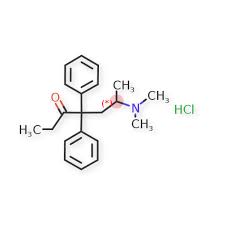Last post I shared a conundrum with you. I’d written a chapter for a book for addiction doctors. But when I learned the title of the book I decided (after all that work!) to withdraw it. Was that the right thing to do? Your comments convinced me it wasn’t.
My chapter urged practitioners to view addiction as a learned habit, not a disease, and showed show how the brain changes corresponding with addiction fit our understanding of learning rather than pathology. And it seemed compatible with a book that was supposed to “create space for clinicians to go beyond narrow guidelines….to reflect more of the ‘art’ of working within addiction medicine.” I thought my chapter would fit right in.
Until I read the proposed title: A prescriber’s guide to methadone and buprenorphine for opioid use disorder. How could a “prescriber’s guide” advocate moving beyond conventional guidelines? At best I’d have to rewrite the thing. And even then, my whole argument for moving beyond the “disease label” starts to unravel when it comes to the prescription pad. (see last post for details) In sum, my chapter in this book would be a sellout! Not just a poor fit but a surrender to the opposition!
That’s where you guys came in. I asked commenters to give me the benefit of your perspectives, and that’s what you did. There were good arguments on both sides, but a majority of you articulated good reasons why I should have left the chapter in.
For example, Matt had this to say: “I don’t quite understand why you would not offer your unique perspective to anyone, especially physicians, and especially since they asked for the chapter to begin with. There are so many physicians who would be exposed to your ideas who may have had no idea they existed.”
For “my ideas,” read “progressive conceptualizations of addiction that step around medicalization.”
Annette wrote that “your role is, undoubtedly, to EDUCATE. The world is shifting…Mental health advocates are talking openly about the impact of social, economic and political structures on our (fragile) mental health, so those of us who understand this need to keep educating.”
But Shaun came up with the coup de gras: “I imagine two scenarios,” he wrote. “ONE: a well-meaning doctor who has learned it all from the book of NIDA, Chapter Volkow, TIP63: Patient has life-long disease of brain that compromises free-will. They will manipulate and lie. I will insist that they pee in a cup [and] have medication discontinued if they test positive… Chance of getting on with life, zero.
“TWO: Having read Marc’s chapter, start by seeing a person who, for whatever reason, has learned to use heroin as a valid way dealing with life. Through collaboration and honest dialogue, with voluntary additional services that they may or may not request, I will prescribe their methadone without fuss and making them seem like I’m doing them the world’s biggest favour. I will…not wield [my] autonomy like a weapon…I would…’provide a scaffolding’ of methadone ‘to support a vision of future self,’ rather than use methadone as a straight jacket to constrict their right to breathe.”
(I suggest you to read these comments in their entirety.)
When I read Shaun’s comment I was still reeling from a psychotherapy session I’d had with Sally (fictitious name) a few hours earlier. I’d been meeting (online) with this fortiesh English woman for psychotherapy every week or two for about eight months, during which time I’ve tried to help her get on with her life, make peace with her demons and self-doubts, and keep her codeine habit within safe limits. This session she talked about her years of heroin addiction and hooking. It wasn’t the first time, but the level of detail, the pain she expressed so vividly, made me more aware than ever of the grinding inhumanity of the life she’d lived.
 How did Sally get into heroin? When she was 14, a teacher at the children’s home began touching her genitals. She wasn’t angry at the time, she says, but her perception of adults changed entirely from that point on. A couple of months
How did Sally get into heroin? When she was 14, a teacher at the children’s home began touching her genitals. She wasn’t angry at the time, she says, but her perception of adults changed entirely from that point on. A couple of months  later, a math teacher–she remembers him as being very old, with bad teeth–started making advances. This time, she threw a chair at him. She got kicked out of school for her troubles, and that’s when she got to know Mike, who introduced her to heroin.
later, a math teacher–she remembers him as being very old, with bad teeth–started making advances. This time, she threw a chair at him. She got kicked out of school for her troubles, and that’s when she got to know Mike, who introduced her to heroin.
Sally had a pattern of running out of one children’s home and landing in another. She hated them all, she told me. Her parents came to visit her often enough, but they didn’t take her home with them. Maybe that was the problem. Her mom had told her she couldn’t handle her  tom-boy ways. Sally liked looking for bugs under rocks rather than dressing nicely. That’s just Sally being Sally, the family concluded. And she became an outsider in her own home. By adolescence she’d often end up swearing at her mom, sniffing glue and hanging out with the wrong kids on the corner.
tom-boy ways. Sally liked looking for bugs under rocks rather than dressing nicely. That’s just Sally being Sally, the family concluded. And she became an outsider in her own home. By adolescence she’d often end up swearing at her mom, sniffing glue and hanging out with the wrong kids on the corner.
So it was the usual culprits: inadequate parenting, child abuse, growing up without any real protection…Sally’s credentials for drug use would include a pretty high ACE score. But Mike was the catalyst.
 He started off as her friend, someone to love her and listen to her. Then he became her pimp, demanding that she go out and find money to score more dope. Her young body was all that stood between his well-being and withdrawal symptoms. He’d beat her up if she refused–broken ribs, a couple of teeth knocked out– except when he got worried about damaging the merchandise.
He started off as her friend, someone to love her and listen to her. Then he became her pimp, demanding that she go out and find money to score more dope. Her young body was all that stood between his well-being and withdrawal symptoms. He’d beat her up if she refused–broken ribs, a couple of teeth knocked out– except when he got worried about damaging the merchandise.
Sally’s life stabilized after all. She went out at night, looked for men, got the money up front, until she had enough to score. Then went back to Mike and shot up. This went on for years. Her mother saw her  once, sitting at a street corner, head lolling back, almost unrecognizable because she was so thin. But she just kept driving. That’s just Sally being Sally. Skeletal and bruised, waiting for a man degraded enough to look past the bruises for 20 minutes of warmth. That’s who she became. Until she was rescued by a man who got her off dope, as long as she’d never look at another man again.
once, sitting at a street corner, head lolling back, almost unrecognizable because she was so thin. But she just kept driving. That’s just Sally being Sally. Skeletal and bruised, waiting for a man degraded enough to look past the bruises for 20 minutes of warmth. That’s who she became. Until she was rescued by a man who got her off dope, as long as she’d never look at another man again.
 The real story of Sally’s addiction is so diametrically opposite anything resembling a disease. The web of social, economic, and familial factors, the absence of a social safety net, the play-it-safe inclination of child-welfare services that weren’t interested in the child’s version of events. That’s where the problem arose. So where was it to be solved? In a doctor’s office? In a methadone clinic?
The real story of Sally’s addiction is so diametrically opposite anything resembling a disease. The web of social, economic, and familial factors, the absence of a social safety net, the play-it-safe inclination of child-welfare services that weren’t interested in the child’s version of events. That’s where the problem arose. So where was it to be solved? In a doctor’s office? In a methadone clinic?
At least once a year someone would demand sex without pay or else they’d hurt her, badly, they warned. And she’d have to “service” this man anyway, get it over with as soon as possible, because the night was wearing on. There weren’t many hours left to find a paying customer. And she needed to buy heroin. Her stomach was already knotting, her muscles cramping, the nausea rising. She couldn’t face it, not tonight. She couldn’t face Mike empty-handed and she had nowhere else to go.
Sally told me that she’d cry every day, even once her life had moved on. She just couldn’t process all she’d been through. Now, today, I couldn’t shake my own grief. That’s when I read Shaun’s comment. And that’s when I realized I should have submitted my chapter after all.
The horror of Sally’s circumstances could have been prevented if opiate substitutes had been available, without prohibitive costs, without further degradation. She would have left Mike, would have left the street, if she could have found a way out.
I’m not beating myself up about it, but I made a mistake. My reluctance wasn’t wrong. The “prescriber’s” shingle unfortunately strengthens the inclination to make OST (opioid substitution therapy) the goal of addiction treatment. It was my decision to withhold the chapter that was wrong.
I should have contributed the chapter to help doctors see OST as scaffolding, a means to an end, rather than an end in itself. That way, the social-developmental roots of (psychological) addiction and the doggedness of physiological dependency could have been specified as parallel aspects of an opioid habit, distinct but convergent, making it all the more insidious. Both are real. Both may need to be challenged head-on. And there’s no universal formula for which should come first.

Leave a Reply